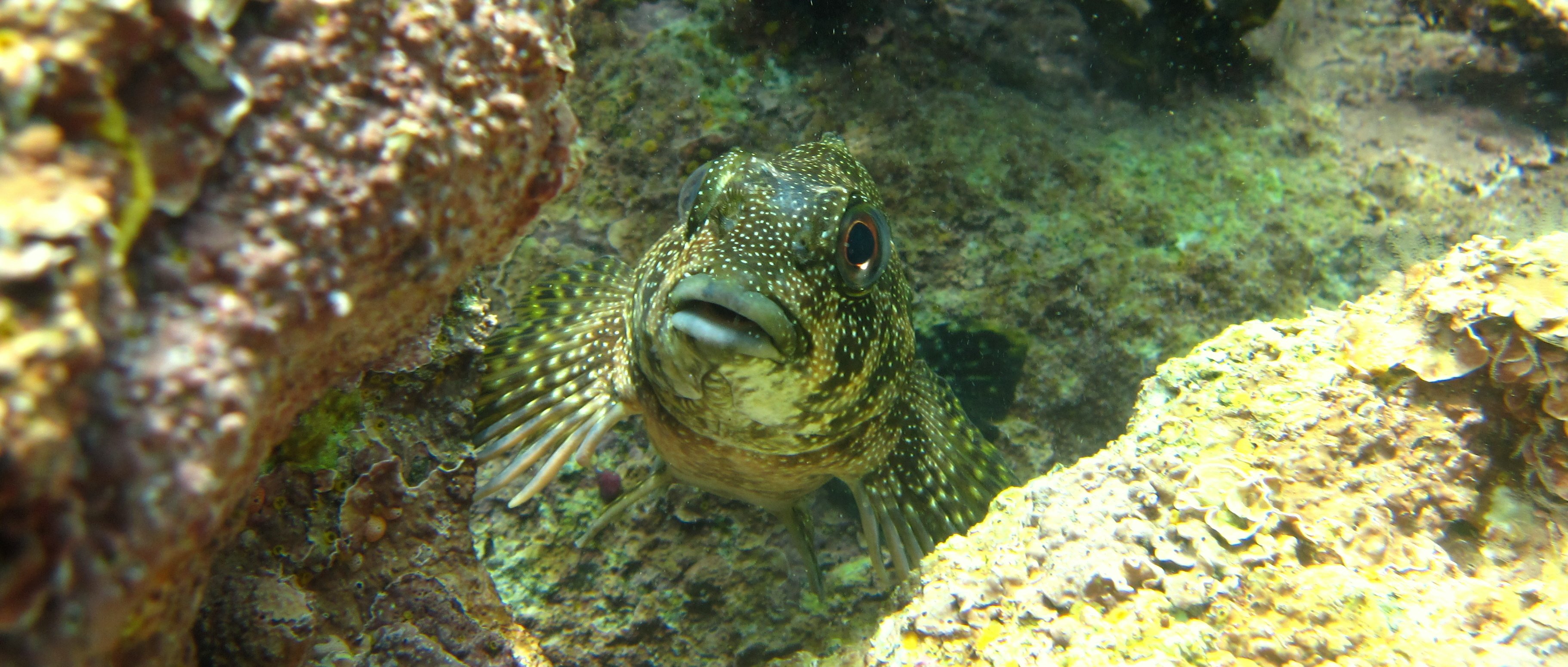
In my opinion, if you’re a birder you should diver too. Not because you generally see many birds while diving, although the experience of seeing shearwaters flying underwater while cage diving, as I once did, was one I think most birders would enjoy. But no, the reason I think birders should be divers is because it ticks, figuratively, many of the same boxes. For some it allows you to enjoy the marvel of nature, for others it allows you to tick the many amazing species of fish and sea life that is down there (even the occasional vagrant). For some it allows you to boast about the amazing locations, and for some it simply scratches that itch to invest heavily in gear.
I was a diver before I was a birder. Diving has taken me to places like Belize, Fiji, Vanuatu, and Egypt, places that coincidentally are fun to bird. In fact, my planning for Borneo this Christmas incorporates diving trips as well as birding destinations. Some of these destinations are far removed from typical birding locations, but have birds you wouldn’t see otherwise. But that is actually by the by, because diving is its own reward. Goat Island, off New Zealand’s Northland, was an amazing diving location without any birds.
Hiwihiwi (Chironemus marmoratus)
Goat Island is one of New Zealand’s oldest marine reserves, one which I have written about before because of its importance in demonstrating the wide range of benefits that marine reserves can have for both the environment, recreational divers and even fishermen. It was one that myself and a collection of friends, all of whom where marine biologists, rocked up to one New Year’s Eve in order to dive the following day. It is also the location of the University of Auckland’s marine laboratory. The location is fairly remote, and we camped in a large field filled with New Year revelers, but were up bright and early for the mornings dive.
The dive was a gentle one, as dive goes, with a lot of kelp to get under to hunt for interesting fish, lobsters, sponges and rays. Particular highlights were a massive Long-tailed Stingray, pipefish (long relatives of the sea horse), nudibranchs, goatfish and a New Zealand Eagle Ray.
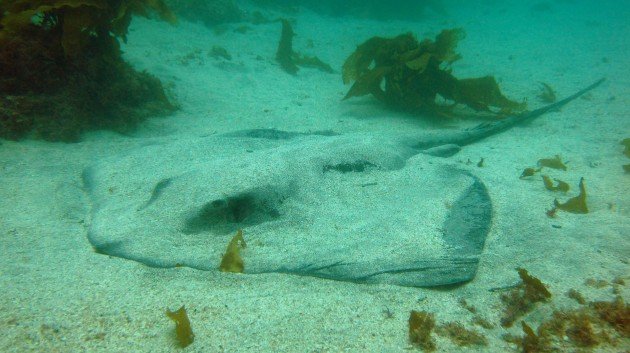 Long-tailed Ray (Dasyatis thetidis)
Long-tailed Ray (Dasyatis thetidis)
Nudibranch
Australasian Snapper (Pagrus auratus)
Hiwihiwi
Basically, diving is like birding, only the “birds” are much easier to approach. I recommend it totally to anyone who has a love of nature.
Gareth shows his appreciation after the dive.
All images are the property of my lovely diving companion and friend Ingrid Knapp, and are used with her permission. Many thanks to Ingrid, Tron, Abi and Gareth for a great trip!


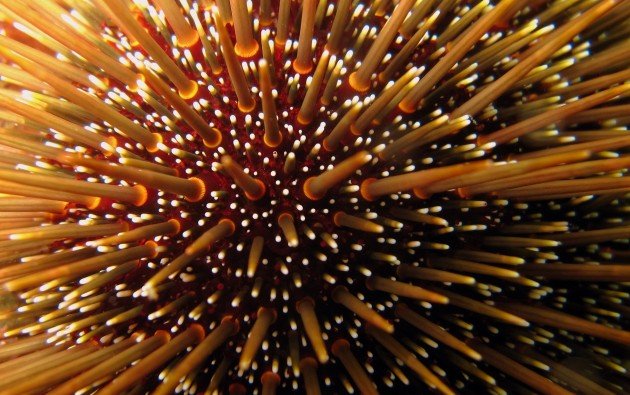
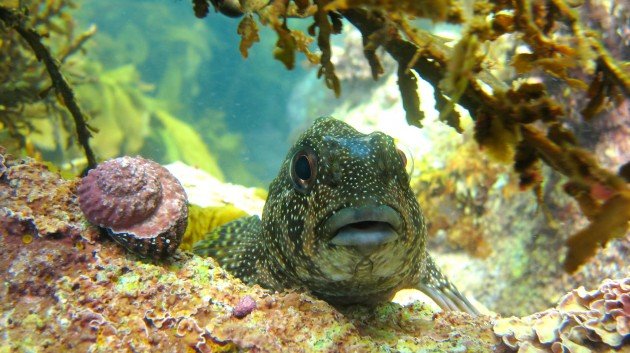
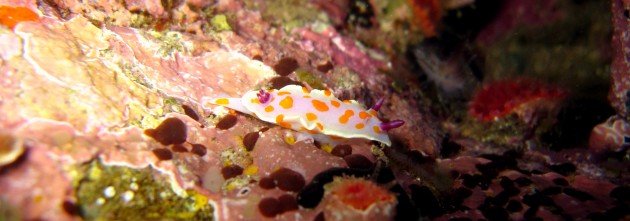
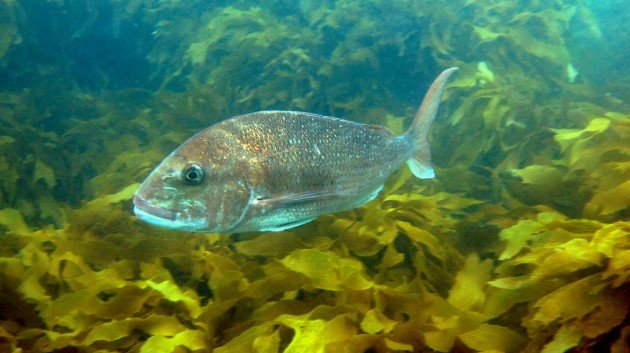
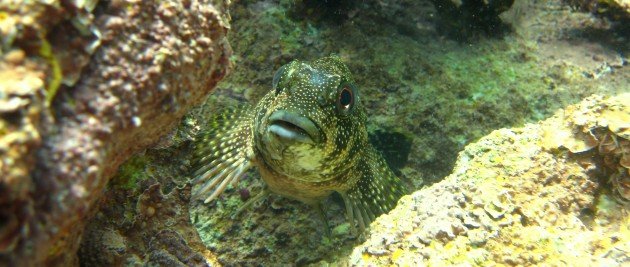
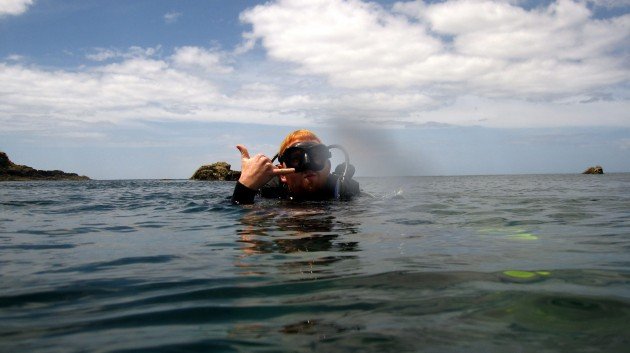











Even without birds, I loved this post, and completely agree with you! I’m a former scuba diver, and now love exploring tide pools, so I enjoy sea stars and anemones at the same time as Black Turnstones and Harlequin Ducks.
I now have a new favorite fish, and its name is Hiwihiwi. Adorable!
You can snorkel close to a reef with birds on as well, as we discovered on Lord Howe Island a few years ago! Ridiculously close!